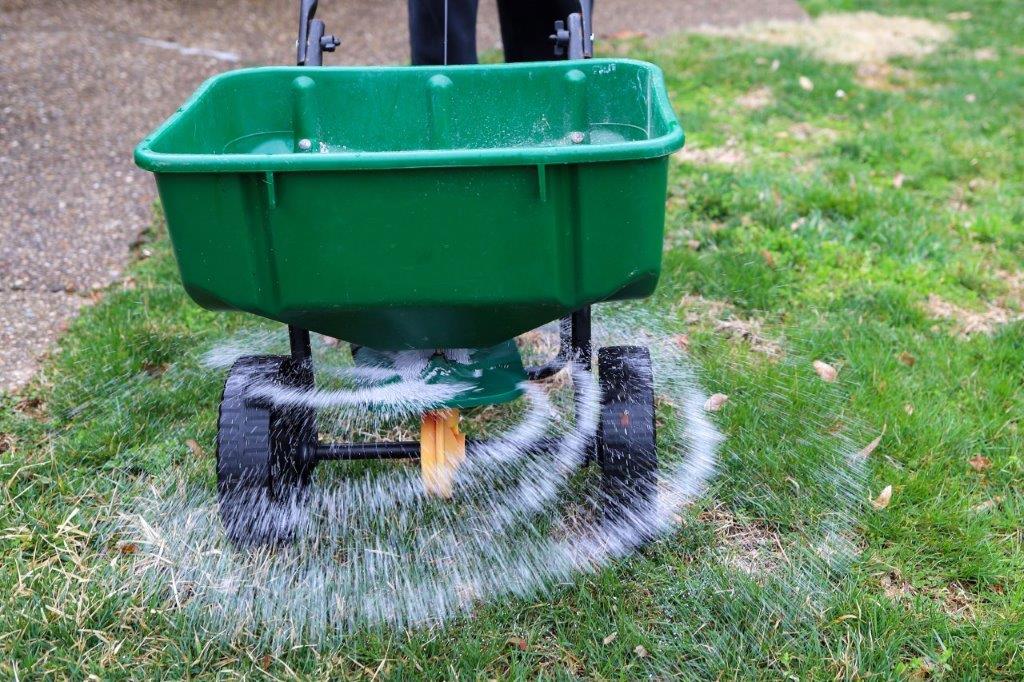Spring time fertlilising
Author: Stefan Palm Date Posted: 9 October 2024
With Spring starting earlier this year, lawns are well and truly out of dormancy and growing in what could be considered their favourite time of year. With the warming up, it's a great time to get out and fertilise your lawn.
Warmth is the trigger to get lawns moving out of Winter dormancy. It increases the soil temperature, which in turn activates the lawn into its growing season. Spring, of course, officially starts on the 1st of September, and while you could fertilise from then onward, it makes sense to time your Spring time fertiliser application to coincide with the actual time the temperature begins to climb, and that generally seems to be early to mid-October in recent years. 
By fertilising your lawn in Spring, you give it all the nutrients it needs to rise out of winter dormancy and then get started for the season. The combination of an increase in ambient temperature combined with Spring rain should see your lawn jump out of the ground.
Regardless of which variety of lawn you have, the best time to apply Spring time fertiliser in South Australia is typically now. This gives the lawn enough time to use the stored nutrients it carried over from Autumn. If you fertilised your lawn in Autumn, the lawn would have most likely used some of that and kept a bit stored in a crystallised state for it to draw on in the early part of Spring. Holding off till October gives your lawn a chance to use that up before you apply more.
When it comes to Spring fertilising, I would recommend a complete, mineral fertiliser such as Paul Munns Greenkeeper rather than an organic type. Organic fertilisers are good and certainly have their place but simply don’t have enough available nutrients to deliver what the lawn needs during Spring. Springtime fertilisers should include Nitrogen (N), phosphorous (P), potassium (K) and trace elements like iron, zinc, copper, boron, molybdenum and manganese. On the back of every fertiliser bag, there is a small table showing you what’s in the fertiliser and how much of each element. This is called the fertiliser analysis. An ideal analysis for a lawn during Spring looks like this:
Nitrogen (N): Around 12%
Nitrogen is vital for a healthy lawn. Your Lawn won’t grow without it. Too little available nitrogen leads to slow growth, increased chance of some diseases, yellowing of blades and thin turf, resulting in increased weed pressure.
Phosphorous (P): Around 2%
Phosphorous assists in converting the sun’s energy and other elements, such as nitrogen, into usable food for lawns. Phosphorous makes lawns more vigorous.
Potassium (K): Around 6%
Potassium encourages environmental hardiness, good water uptake and strong cell and root formation that helps grass survive the summer temperatures to come.
Trace elements, including around 1-2% iron (Fe)
A fertiliser with an analysis similar to this should be applied at no more than 1kg per 10 square metres.
Green keeper not only has the right nutrient analysis, it also has a combination of organic components, including chicken manure, seaweed kelp and fish emulsion. Organic components add bio-diversity back to your soil, which in turn leads to soil health. Healthy soils lead to healthy lawns, and that's what we're all looking for this Spring!
For more information on fertilising, check out our year-round fertiliser guide. It will help you to know what to use, when for the best results on your lawn.
In the coming weeks, I'll write some more about liquid fertilisers, seaweed based ammendments and soil tonics - all beneficial things for lawn health. In the meantime, take advantage of our Spring fertiliser specials.



